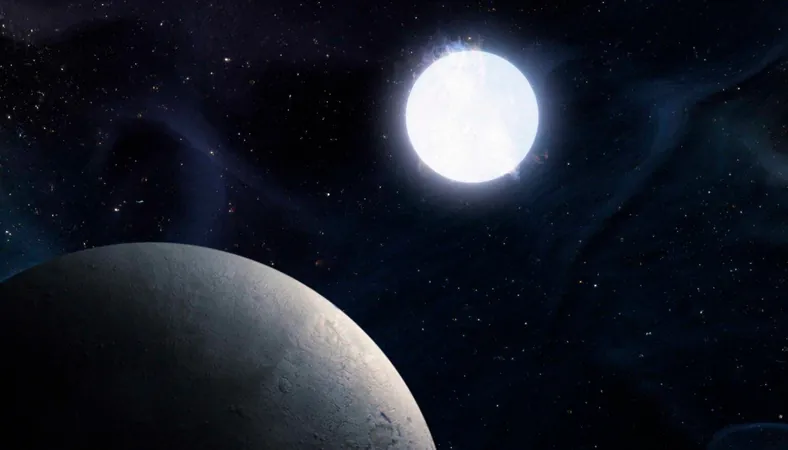
Discovering a ‘Future Earth’: The Remarkable New Planet Orbiting a Dying Star!
2024-11-07
Author: Liam
The White Dwarf and Its Earth-Like Neighbor
The rocky planet, which shares a similar mass to our Earth, resides in the constellation of Sagittarius, orbiting a white dwarf—a dense stellar remnant that comes into existence after a star exhausts its nuclear fuel and sheds its outer layers. This finding suggests a more optimistic fate for Earth, as it opens up the possibility of human survival beyond our solar system, potentially migrating to the icy moons of Jupiter and Saturn, such as Europa, Ganymede, Callisto, and Enceladus.
The Path of Stars and Their End States
Every star, including our sun, has a life cycle. A white dwarf represents the final stage in the evolution of stars. Before reaching this phase, our sun will swell into a red giant, expanding outward and potentially swallowing the inner planets—most likely Mercury and Venus. This brings into question the fate of Earth during this transformation.
The Discovery Behind the Discovery
Research published in the esteemed journal Nature Astronomy by a talented team from the University of California, Berkeley, details their study using the Keck Telescope in Hawaii. They investigated the system known as KMT-2020-BLG-0414, which revealed a white dwarf accompanied by an Earth-sized planet in an orbit twice the radius of Earth's orbit around the sun, alongside a massive brown dwarf about 17 times Jupiter’s mass.
The Potential Future for Earth
However, it’s important to note that Earth’s future remains grim. Scientists estimate the transition to a red giant might commence within a billion years or delay up to six billion years. Regardless, even if Earth avoids being swallowed initially, the sun’s expansion will ultimately boil away our oceans, transforming Earth into an inhospitable lava planet. By around eight billion years from now, what remains could very well orbit a white dwarf.
Is There Hope for Humanity?
As the sun progresses into its red giant phase, the habitable zone is projected to shift outward to the orbits of Jupiter and Saturn. This migration could create conditions for some of their moons to evolve into ocean worlds, offering potential refuge for humanity. Zhang notes, “Humanity could migrate out there,” highlighting an optimistic outlook amidst cosmic uncertainty.









 Brasil (PT)
Brasil (PT)
 Canada (EN)
Canada (EN)
 Chile (ES)
Chile (ES)
 España (ES)
España (ES)
 France (FR)
France (FR)
 Hong Kong (EN)
Hong Kong (EN)
 Italia (IT)
Italia (IT)
 日本 (JA)
日本 (JA)
 Magyarország (HU)
Magyarország (HU)
 Norge (NO)
Norge (NO)
 Polska (PL)
Polska (PL)
 Schweiz (DE)
Schweiz (DE)
 Singapore (EN)
Singapore (EN)
 Sverige (SV)
Sverige (SV)
 Suomi (FI)
Suomi (FI)
 Türkiye (TR)
Türkiye (TR)